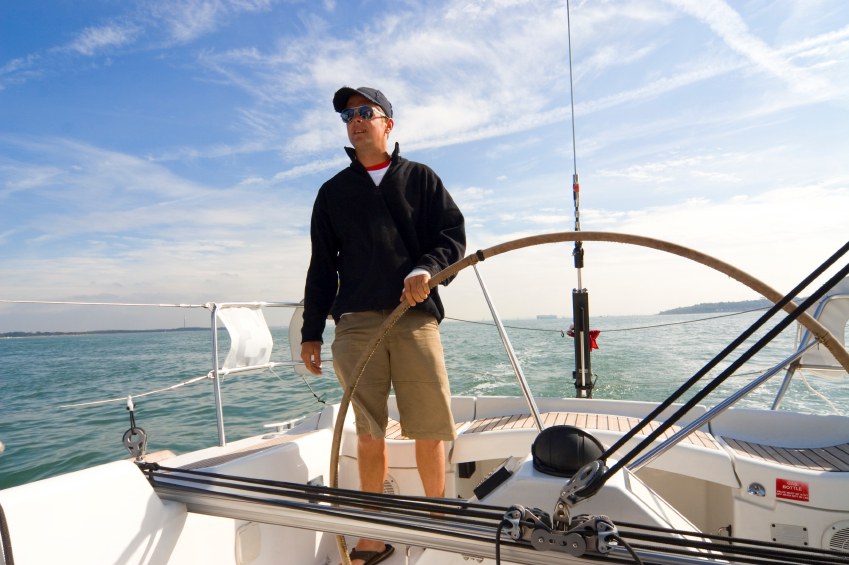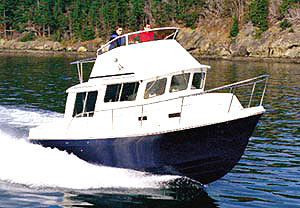How To Conduct A Sea Trial
Tips to show off the boat to prospective buyers with a sea trial.
A sea trial is a fancy term for a test drive, designed to test a boat’s seaworthiness. Surveyors use sea trials as an opportunity to test speed and maneuverability, as well as check for vibrations and observe other systems that can only be tested in the water.
There are established standards for sea trials leading to a vessel’s certification, but unless a buyer insists on a survey, a casual boat ride is usually all that is expected. Serious buyers will insist on a sea trial before buying, especially if your boat is uncommon or complicated. A chance to get out and share the enjoyment of being on the water is a great way to sell the "dream," which will help sell the boat.
Less serious buyers may just be looking for a joy ride at your expense. To avoid wasting your time, try to get a buyer to agree to a price before you leave the dock. For a larger boat, it would not be uncommon to retain a refundable deposit and signed contract with an "acceptance of vessel clause" with regard to a successful sea-trial.
If a marine surveyor is not within your budget when shopping for a boat, new or used, you will need to rely on yourself to perform a sea trial. By the time you get to this point of the buying process, you should have a good idea what kind of boat you’re considering. You just need to confirm your choice or decide not to buy. But what does a marine surveyor look for? It starts long before the boat goes in the water.
When the boat is on the trailer, walk around it and thump the sides of the boat with the bottom of your fist. The hull should ring with a solid whump and it should feel firm under your fist. This is particularly important in the transom area, where water intrusion and delamination typically appear first.
Look at the condition of the underwater gear. Is the skeg still nicely painted? Is the leading edge still straight and true or is it knackered from hitting rocks or sandbars? If it is damaged, keep its condition in mind when you shift the boat in and out of gear during the sea trial.
On Land
While you’re still on dry land, get on board and see and touch everything. Wiggle the grab rails to see if they’re loose. Sit in the pedestal seats to see if they’re still mounted firmly to the deck. Open the stowage compartments to be sure the hinges are still solid. Also, use all your senses.
For example, give those stowage compartments a sniff to check for mold or mildew. Also smell under the engine hatch. You likely will smell gasoline to a certain degree, but anything overpowering indicates a fuel leak. Look in places where you wouldn’t normally look. You may discover missing hardware or frayed carpeting or upholstery.
During the Sea Trial
For the sea trial, the boat to be cold when you fire it up for the first time. If the engine’s rotating assembly is going to make any funny noises, it will be when it’s cold. Open the hatch so you can hear everything better. Does the starter engage smoothly and quietly? Does the engine rattle or knock when you start it? It should run with little more than a thrum of vibration and the hiss from the flame arrestor atop the engine.
As you back out, notice how the shifter works. Does it engage forward and reverse when the shifter is moved to the detents? Is there any binding or sticking in the shift cables? Not all signs of trouble will be deal-breakers, but it can help you develop your punch list if you decide to buy it, and maybe give you some points for negotiating price.
When you advance the throttle, notice how difficult or easy it is for the boat to get on plane and see if it’s something you can live with every boating day. Once you’re up and cruising, take it top speed. The boat should do that and hold that speed with no trouble. If you’re satisfied with the result, bring it back down to cruising speed, usually 3,500 rpm is a good rule of thumb.
At that speed—in an area where it’s safe to do so — take the boat into right and left turns. Do slalom maneuvers then full circle turns. The boat should hold its line without hooking, washing out or blowing out the prop. If the boat has a stepped bottom, don’t trim it down to do these tests. While you’re doing this listen for cautionary squeaks and rattles.
If you’re satisfied, cruise it back the dock the way you normally would. Once you get back to an idle zone, open the engine hatch and do another full sensory check. Many times an engine that has been warmed to operating temperature will act different than it did when cold.
Will these procedures keep you from buying a lemon? There is a chance any used boat you buy will need some work not long after you buy it. However, you can learn a lot about any boat testing it this way. The method will uncover mechanical foibles and idiosyncrasies, yes, but it also will highlight — perhaps most importantly — whether you like it enough to make it your own.
Tips to get the most out of a sea trial:
- If your boat is stored out of the water or has not been used recently, take your own test ride first to make sure everything is operating correctly.
- Keep the additional “riders” to a minimum.
- Choose a protected location, unless the buyer specifically requests open water.
- Give the buyer a chance to look things over before getting underway.
- Offer the buyer a chance to steer, assuming s/he has demonstrated boating experience.
- Show off the boat’s best features, but don’t highlight any known negative aspects.
- Answer all questions positively and honestly.
Unless other arrangements are made up front, the seller should expect to cover any expenses associated with a sea trial. And at all times, remember that you are in charge. If you do turn over command, remain close by in case of an emergency.
For more, read through our Boat Buyer's Guide, which includes topics like How To Negotiate Boat Prices.
Editor's Note: This article was originally published in May 2015, updated in June 2018 and June 2020.












